#upper swabia
Text

October mood
#october mood#forest#misty#landscape#photographers on tumblr#autumn#germany#baden wuerttemberg#upper swabia#moorland#reed
2K notes
·
View notes
Photo

215 notes
·
View notes
Text
Recommendable Sushi in Ravensburg - Restaurant Test Review
Recommendable Sushi in Ravensburg - Restaurant Test Review
Appetite for sushi in Ravensburg? The Sushi & Nem restaurant in Ravensburg is a true gem of Asian cuisine and a perfect place to enjoy delicious sushi specialities. It is located just a short walk from the old town and the train station, making it a convenient destination for locals and visitors alike.
vegetarian options for sushi in Ravensburg
As a vegetarian, I was pleased to find a variety…

View On WordPress
#Baden-Württemberg#Lake Constance#Ravensburg#Restaurant Ravensburg#Restaurant Review#Sushi#Upper Swabia#Vegetarian
0 notes
Text
Recommendable Sushi in Ravensburg - Restaurant Test Review
Recommendable Sushi in Ravensburg - Restaurant Test Review
Appetite for sushi in Ravensburg? The Sushi & Nem restaurant in Ravensburg is a true gem of Asian cuisine and a perfect place to enjoy delicious sushi specialities. It is located just a short walk from the old town and the train station, making it a convenient destination for locals and visitors alike.
vegetarian options for sushi in Ravensburg
As a vegetarian, I was pleased to find a variety…

View On WordPress
#Baden-Württemberg#Lake Constance#Ravensburg#Restaurant Ravensburg#Restaurant Review#Sushi#Upper Swabia#Vegetarian
0 notes
Text
Recommendable Sushi in Ravensburg - Restaurant Test Review
Recommendable Sushi in Ravensburg - Restaurant Test Review
Appetite for sushi in Ravensburg? The Sushi & Nem restaurant in Ravensburg is a true gem of Asian cuisine and a perfect place to enjoy delicious sushi specialities. It is located just a short walk from the old town and the train station, making it a convenient destination for locals and visitors alike.
vegetarian options for sushi in Ravensburg
As a vegetarian, I was pleased to find a variety…
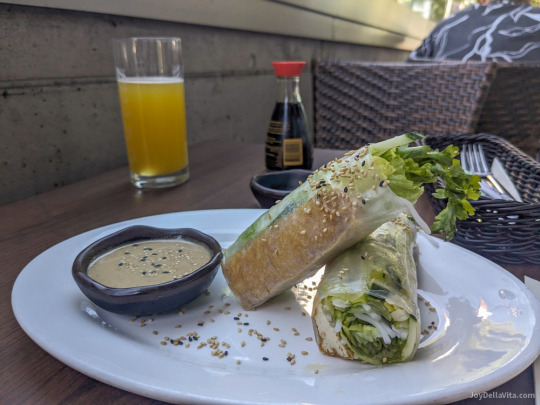
View On WordPress
#Baden-Württemberg#Lake Constance#Ravensburg#Restaurant Ravensburg#Restaurant Review#Sushi#Upper Swabia#Vegetarian
1 note
·
View note
Text
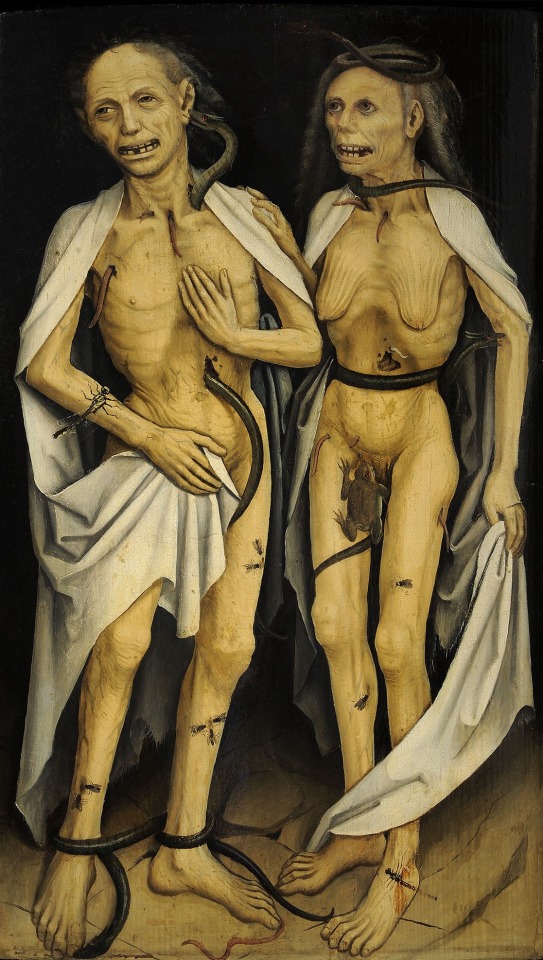
The Dead Lovers, C. 1470
Anonymous master from Swabia or Upper Rhine
#1470s#unidentified maker#oil painting#gothic art#allegory#memento mori#death#gothic#15th century#love
11 notes
·
View notes
Text
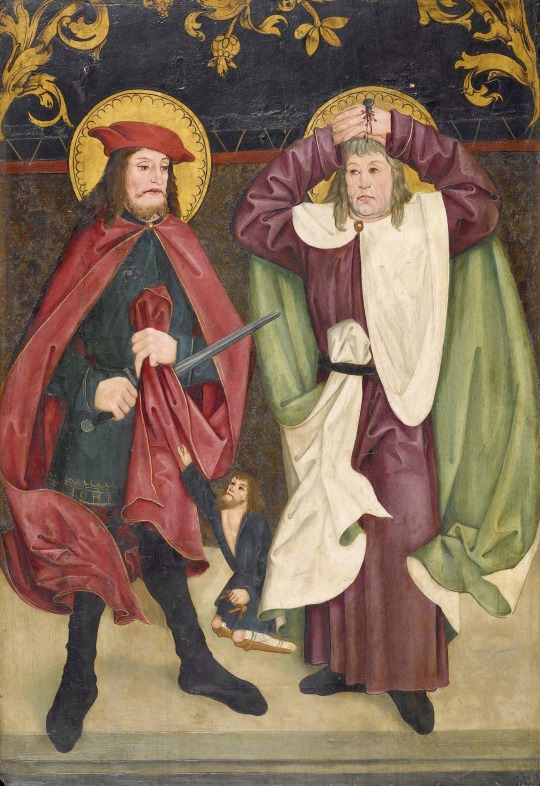
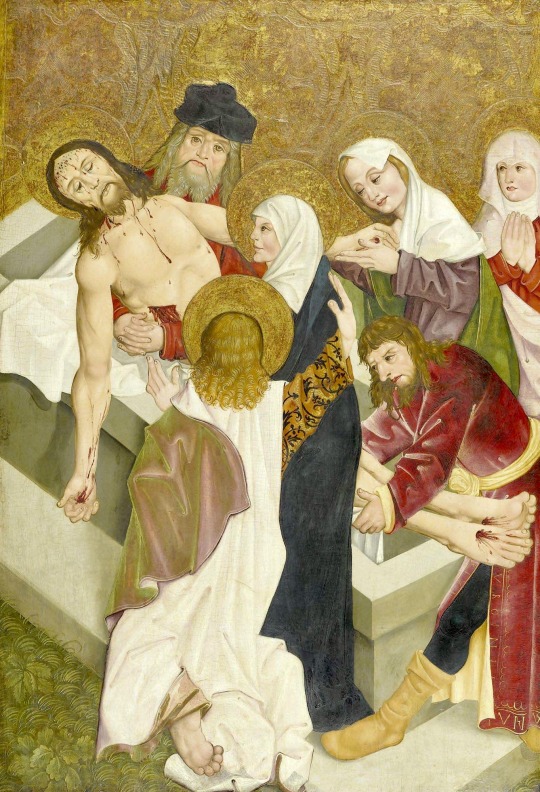
MASTER FROM UPPER SWABIA, CIRCA 1500
Altar wing: entombment of Christ/Saint Martin and Panthaleon. Oil on panel.
Koller Auctions
8 notes
·
View notes
Text
The South German town bookstore experience is walking past two large shelves with regional crime dramas about officer Hubertus or whatever investigating in Upper Swabia and then the horror section is 5 books and 3 of them are Lovecraft short story compilations.
3 notes
·
View notes
Text

This illustration is labeled "Peruchty. perychty, peruty na Podřipsku," Figure 21 in a book on Czech festivals by Zíbrt, Čeněk. Veselé chvíle v životě lidu českého. Czechia: Nákl. F. Šimačka, 1910.
"The bahby are coming!"
Czech guisers as old women carrying brooms during the Winternights festival, between Christmas and Feast of the Epiphany. Here the pagan and christian customs syncretize and converge, with masked processions, songs, rites, and play. Past posts discuss the Perchten who are active in southern German-speaking regions, especially Austria, with masks of the Old Goddess Perchta, races, and masquerades. The Czechs had their version of this celebration, with a variety of names for the (sometimes demonized) goddess [ch prounounced kh, not like in "choice"]:
"Perchta, Perechta, Peruchta, Parychta, Šperechta. Mainly South Bohemian folklore today knows Perechta as a mare, made of linen, a klibna (see next), which goes around the buildings at Christmas and Shrove Tuesday. The North Bohemian and Moravian folk tradition has preserved under the name Perechty, Šperechty the image of a female monster who goes around and threatens women who pass on Thursdays, children who do not fast or are naughty. Thus we distinguish Perechty (Peruchty), monstrous figures, prowling and haunting, and Perechty, masqueraders disguised as mares.
Čeněk gives detailed description of the varying customs and costumes, masks and rites, in different locales of Czechia. Often a chalice or goblet was carried, or very commonly brooms, which masqueraders used to sweep out rooms in the houses they visit (and demand pastries, food, and drink from), also sweeping benches, tables, shelves, stoves. Sometimes they swept the stove, in order to remove malign and impure influences for the coming year. All the while they are singing about baking, brewing, and goose in the oven. Or the procession carries brewers' vessels, malt, mixing bowls, and sometimes plasters the walls using their brooms.
"In Western Europe, especially among the Germans, the Feast of the Three Kings (Berchtentag) was personified as the supernatural being Berchta, Perchta, who is also known to the Slavs and neighboring Germans. [Omitting embedded footnotes, for which see link.] Peruta, Parychta, in Moravia Šperechta, near Slovenia Pehtra baba, Vehtra baba.
...
"In 1861, W. Wattenbach found a manuscript from the 15th century in the castle library in Fulnek in Moravia (from 1418) a guide to writing letters, compiled in Jihlava by an unknown schoolmaster, called »Candela rhetoricae«... [He refers to] the parable of the ghostly Perchta, who is said to have a golden head, pewter eyes, copper ears, an iron nose, a silver beard (moustache?) and a leaden neck.) [This concurs with German traditions recorded by Jacob Grimm in the early 19th century, of "Percht with the Iron Nose," who is also long-toothed, like the Baba Yaga, and often her teeth are also iron.
...
"It can be seen how the name Perchta generalized in the folk tradition at that time and was added to the folk tradition.+) >She walks like Perchta, Paryta«, i.e. proudly, about a strong, stout, haughty woman, but sometimes also taken in the sense of dejected, mournfully flabby...
...
"In German mythology, the name originally sounded like this in Old German Perahta, later it was softened into Berchta, Bertha. Its proper meaning was: 'Shining, great, noble, graceful.' This fabulous being, similar or quite identical to Frau Holda, occurs precisely in the Upper German countries where she (Holda) stops, namely in Swabia, Alsace, Switzerland, Bavaria and Austria; part of the Franks and Durinci know Perchta and Holda side by side, at least there are boundaries between the two.)
"According to the meaning of the word, Perchtha was originally a benevolent, joy-bringing goddess; but it is rarely presented as such, usually the horrible nature is pointed out. [In other words, she became demonized] She acts as a scary character and a bully scaring children. In fairy tales about Perchta, the bad meaning prevails, as well as the good meaning about Holda.
"Their identity can also be seen from, among other things, the fact that they both circumambulate the twelve days between Christmas, with which in the beginning of the Middle Ages the Christian New Year began in some places, and the Feast of the Epiphany, but for Percht among the Germans there is a special day at the end of this period, the day Perchtin (Perchtag, Percht-abend) established.
"Perchta, like Holda (according to German legends), watches over ancestors or laundresses [also newborns, especially unbaptized ones], and whatever she finds unspun on the last day of the year, she spoils it. [Since the Old Goddess ruled spinning , custom decreed that the last of the flax or wool be spun off before her holyday, or else. The following tradition is probably an adaptation of Christian fasting customs:]
"According to ancient custom, her celebration must be celebrated with porridge and fish. Anyone who has eaten other foods on her day will have their stomach cut open, filled with chopped meat [or straw, according to Grimm] and sewn up again with a hoe instead of a needle and a chain instead of threads. That's why in Moravia, somewhere on Christmas Day, they [the Perahty masqueraders] haunt children, if they don't observe the fast and eat something before dinner, by beating them.
...
2 notes
·
View notes
Photo
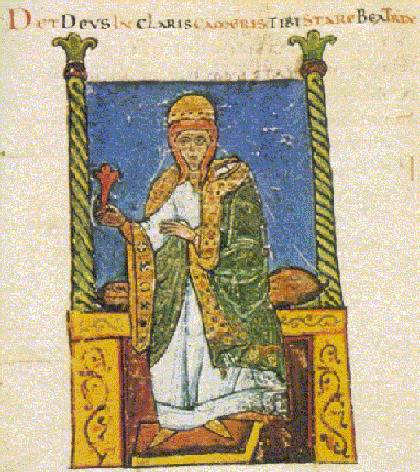
Beatrice of Bar (c. 1020 – 18 April 1076) was the marchioness of Tuscany by marriage to Boniface III of Tuscany, and Regent of Tuscany from 1052 until her death, during the minority of and in co-regency with, her daughter Matilda. She was the daughter of Frederick II, Duke of Upper Lorraine, count of Bar, and Matilda of Swabia. She was married first to Boniface III of Tuscany and later to Godfrey of Lotharingia.
2 notes
·
View notes
Text


GRUSS GOTT => The expression grüß Gott is a greeting, less often a farewell, in Southern Germany and Austria (more specifically the Upper German Sprachraum, especially in Bavaria, Franconia, Swabia, Austria, and South Tyrol).
#gruss gott#pocztówka#post card#litho#litografia#germany#niemcy#Austria#kartka#greeting#pozdrowienie#Bayern
1 note
·
View note
Text

#no edit#winter#snow#forest#photographers on tumblr#snowy#woods#short#frozen#south west germany#upper swabia#germany#europe#2020
158 notes
·
View notes
Text

96 notes
·
View notes
Text
Enjoying French delicacies from a patisserie in Ravensburg
Enjoying French delicacies from a patisserie in #Ravensburg
Since the beginning of September, the city center has been enriched by a delicious hotspot, a patisserie in Ravensburg. The traditional house Weber & Weiss from Friedrichshafen has opened a branch, the first in another city. Under the melodious and promising name “Weber & Weiss Konditorei Patisserie Chocolaterie“, visitors will find innovative as well as all-time favorites. For such an almost…

View On WordPress
0 notes
Text
Enjoying French delicacies from a patisserie in Ravensburg
Enjoying French delicacies from a patisserie in #Ravensburg
Since the beginning of September, the city center has been enriched by a delicious hotspot, a patisserie in Ravensburg. The traditional house Weber & Weiss from Friedrichshafen has opened a branch, the first in another city. Under the melodious and promising name “Weber & Weiss Konditorei Patisserie Chocolaterie“, visitors will find innovative as well as all-time favorites. For such an almost…

View On WordPress
0 notes
Text
Following in the footsteps of my ancestors (Auf den Spuren meiner Ahnen)

Emperor Maria Theresia
The ancestors on my father's side originally came from the area around Stuttgart in Swabia (Germany). They were so-called “Danube Swabians” who emigrated more than 200 years ago to an area north of Belgrade which belongs nowadays to Serbia. The „Swabian Migrations“ were the organized settlement of almost deserted areas (as a result of the Turkish wars) in Hungary, Slavonia, Batschka and Banat by the Habsburg Monarchy (emperor Maria Theresia) in the 18th century. These areas used to be part of the Habsburg Monarchy (also later called „Danube Monarchy“) until the collapse of „Austria-Hungary“ after the First World War. My mother came from an area around Wels in Upper Austria.
After World War II, my father's family was forced to leave their homeland. Their escape took them first to Austria, where my father met my mother - and finally to Brazil to the area around Curitiba. My parents lived in Brazil for 11 years - but returned to Europe in the 1960s - first to Austria, then to Germany. They ultimately returned to exactly where my ancestors set off from over 200 years ago: the area around Stuttgart. The last world war in particular uprooted many people who then sought happiness elsewhere - which led to geographically dispersed families. My family spread across southern Germany, Austria, Switzerland and Italy and of course Brazil. Traumatic events such as an escape dig deep into people's psyches - especially those of children. I think unconsciously my father suffered from trauma. He didn't seem unhappy to me - but he had a problem with settling down.
Budapest has been on my list of travel destinations for a long time - so a river cruise in 2021 took my wife and me along the Danube from Passau to Budapest and back again. At the same time, I was able to see Vienna again and immerse myself in the history of the old Danube Monarchy - perhaps also to be able to understand the lives of my ancestors and my parents a little better. The place in which we grow up shapes us - how we feel, think and act. And of course values, views and habits are also passed on from one generation to another. The river cruise, especially at the beginning and end, took me past areas and places in Upper Austria that I knew from my childhood from the countless visits of my parents' friends and relatives. This of course released emotions because I consciously remembered. This trip was basically a bow to my parents' lives. I thought about them often during the trip - and perhaps learned a thing or two about myself as well.

Danube Monarchy Austria-Hungary
Die Ahnen meines Vaters stammten ursprünglich aus der Gegend um Stuttgart in Schwaben (Deutschland). Es waren sogenannte „Donauschwaben“, die vor mehr als 200 Jahren in ein Gebiet nördlich von Belgrad auswanderten, das heute zu Serbien gehört. Die „Schwabenzüge“ waren die organisierte Besiedlung von nahezu entvölkerten Gebieten (infolge der Türkenkriege) in Ungarn, Slawonien, Batschka und Banat durch die Habsburger-Monarchie (Kaiserin Maria Theresia) im 18. Jahrhundert. Diese Gebiete gehörten bis zum Zusammenbruch der Habsburger-Monarchie (später auch „Donaumonarchie“ genannt) nach dem Ersten Weltkrieg zu „Österreich-Ungarn“. Meine Mutter stammte aus einer Gegend um Wels in Oberösterreich.
Nach dem 2. Weltkrieg war die Familie meines Vaters gezwungen, ihre Heimat zu verlassen. Ihre Flucht führte sie zunächst nach Österreich, wo mein Vater meine Mutter kennenlernte - und schliesslich nach Brasilien in das Gebiet um Curitiba. Meine Eltern lebten 11 Jahre in Brasilien - sind aber in den 1960iger-Jahren wieder nach Europa zurückgekehrt - zunächst nach Österreich, dann nach Deutschland. Sie sind letztlich genau dorthin zurückgekehrt, von wo aus sich meine Ahnen vor über 200 Jahren aufgemacht haben: das Gebiet um Stuttgart. Insbesondere der letzte Weltkrieg hat viele Menschen entwurzelt, die dann ihr Lebensglück woanders suchten - was zu geografisch recht zerstreuten Familien führte. Meine Familie verteilte sich auf Süd-Deutschland, Österreich, Schweiz und Italien und natürlich Brasilien. Traumatische Ereignisse wie eine Flucht graben sich tief in die Psyche der Menschen ein - insbesondere in diejenige von Kindern. Ich denke, unbewusst hat mein Vater unter einem Trauma gelitten. Er erschien mir nicht unglücklich - er hatte aber ein Problem mit dem Sesshaftsein.
Budapest stand lange Zeit auf meiner Liste an Reisezielen - so führte meine Frau und mich eine Flusskreuzfahrt in 2021 entlang der Donau von Passau nach Budapest und wieder zurück. Nebenbei konnte ich noch einmal Wien wiedersehen und etwas in die Geschichte der alten Donaumonarchie eintauchen - auch um vielleicht das Leben meiner Ahnen und meiner Eltern etwas besser verstehen zu können. Der Ort, an dem wir aufwachsen, prägt uns - wie wir empfinden, denken und handeln. Und natürlich werden Werte, Ansichten und Gewohnheiten auch von einer Generation zur anderen vererbt. Die Flusskreuzfahrt führte mich besonders am Anfang und Ende an Gegenden und Orten in Ober-Österreich vorbei, die ich aus meiner Kindheit von den unzähligen Besuchen der Freunde und Verwandten meiner Eltern noch kannte. Das setzte natürlich Emotionen frei, weil ich mich bewusst erinnerte. Diese Reise war grundsätzlich irgendwie eine Verbeugung vor dem Leben meiner Eltern. Während der Reise habe ich oft an sie gedacht - und vielleicht auch das ein oder andere über mich selbst dabei gelernt.


Itinerary (Reiseroute): Passau - Vienna - Budapest - Bratislava - Melk (Wachau) - Passau
-Simplicius Simplicissimus
#traveling#reisen#austria hungary#österreich ungarn#habsburger monarchie#habsburg monarchy#donaumonarchie#danube monarchy#ancestors#ahnen#simplicius simplicissimus
0 notes